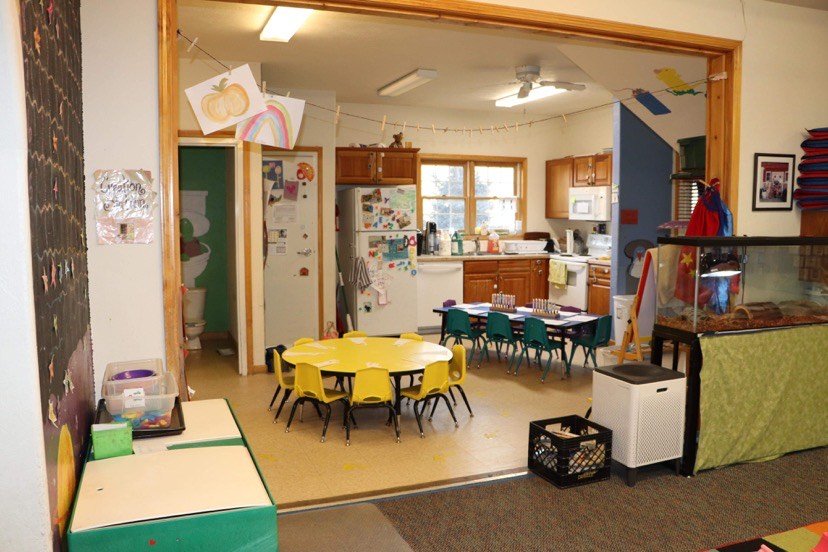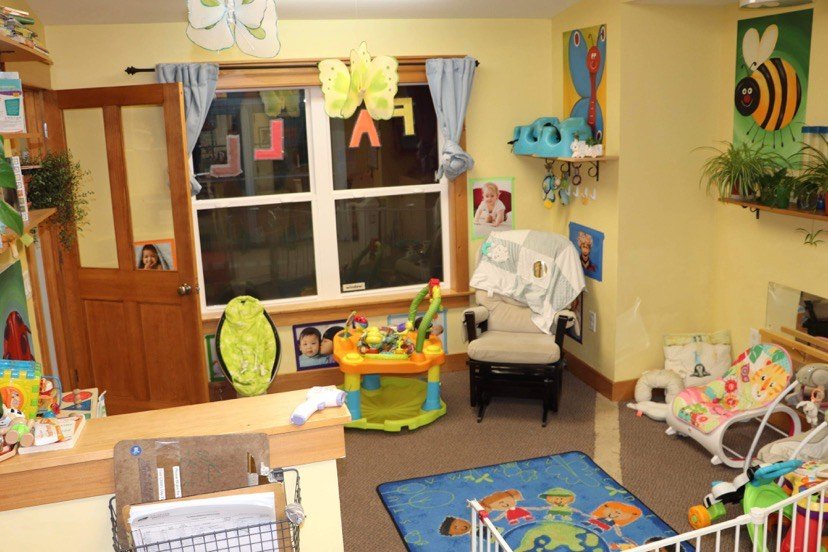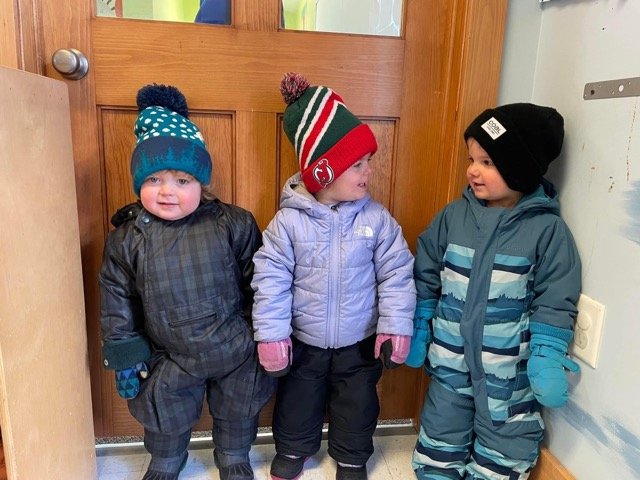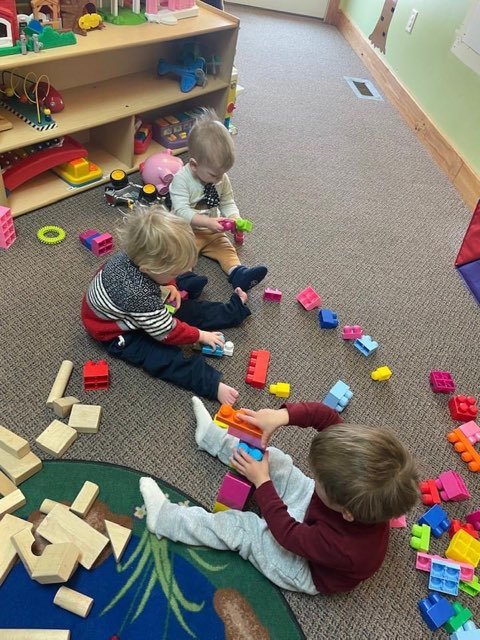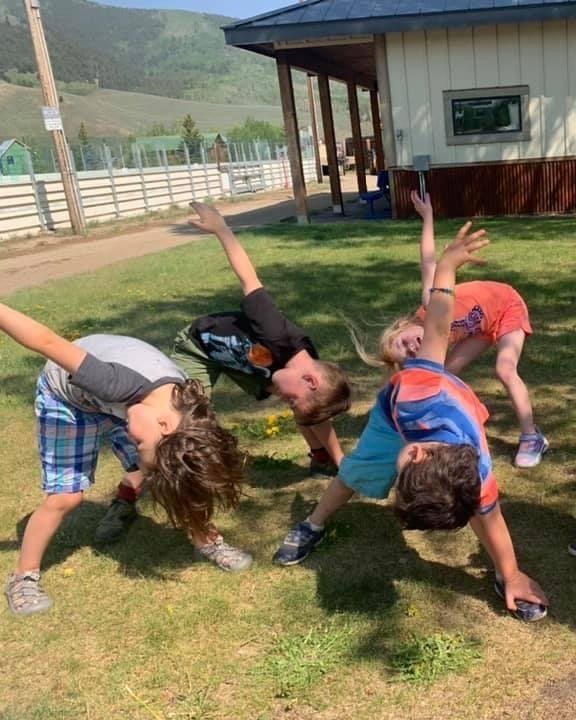
OUR CURRICULUM
The curriculum for Little and Teeny Red Schoolhouse was developed by Jessica Rutherford (owner), and based on research on developmentally-appropriate activities for each age group. The day is organized to be a balance of teacher-directed and child-directed activities, as well as active and sitting activities, to best meet each child’s needs.
Little Red Curriculum
There are 3 groups downstairs, and one upstairs at Little Red. The Seeds are the 2s, Sprouts are 3s, and Buds are PreK. Each group follows a different schedule from one another, and therefore revolve around each other throughout the morning.
You won’t see a free-for-all daycare type setting at Little Red! We find that when the atmosphere is crazy and too crowded, the kids don't thrive or have fun, and often get into conflicts since they are fighting for toys, space, and attention. As the kids grow up at Little Red, they get to experience different elements and different spaces so it never gets boring for them.
During our PreK time from 1:30-3, they get to partake in a literacy time, “Special” (either Math, Science, Games, Yoga, or Spanish), and a Project which relates to the theme of the week and draws on their writing and creating abilities. We do recommend that PreK kids stay until at least 3pm to partake in these fun and valuable learning activities.
Once the kiddos reach PreK, they get to partake in the Telian program during which they learn sound and letter association through a multisensory approach. It is highly effective in teaching early reading skills, and many of our kids enter kindergarten able to read or sound out words! They also do the Handwriting without Tears program for letter formation during PreK. This program is a super fun way to teach proper formation of letters through a wet, dry, try approach on chalkboard slates. They love it!
Learning with a social and emotional focus.
A big part of our curriculum is the social/emotional piece, which is essential in early childhood education. At Little Red, we follow the Pyramid Model, which is based on a positive behavioral approach embedded into our curriculum. We strive to use at least 5 positives to 1 negative and tell children what they should do instead of what they shouldn’t do. Enforcing our expectations and safety rules while guiding the kids to make good choices and solve their own problems has led to an amazing transformation at our school! We have a social skill of the week, and are constantly present to lead the kids in problem-solving and using their words. When we are ahead of the challenging behavior that can arise with this age group, we find that we can do more to avoid this behavior up front, instead of “putting out fires” all day. It’s great to be so positive all day long!
Teeny Red Curriculum
At Teeny Red, we have an infant side and a toddler side.
We never have more than 3 infants with a caregiver, and strive to offer a nurturing and stimulating program throughout the day. Obviously, the basic needs (feeding, sleeping, and diapering) are the top priority, and we have great systems in place to make sure each baby’s individual needs are met. Within this scope, we provide storytime, music class, developmental milestones time, large motor, small motor, massage, vocabulary (signing), and lots of snuggling!
Toddlers
On the toddler side, we follow a predictable schedule that’s the same every day so they know what to expect. We have a 5:1 teacher to student ratio. Since their attention span is limited, each time is 15 minutes unless they are engaged (then we let them keep going!). These kiddos do art, circle time, centers, sensory table time, music, stories, puzzles, small motor, free play, dramatic play, large motor time, and more! This is a great age to work a lot on social skills, and develop their vocabulary so that they can navigate nicely in a group. They are like little sponges, and it’s such an impactful age!
“Since going to Little Red, I’ve been floored by how much my girls have progressed. The curriculum at Little Red has been amazing. I love how they make learning fun for my girls. I don’t even think they realize how much they’re doing because they enjoy it so much. Little Red has been an incredibly wonderful experience and seeing both of my daughters grow in ways I never expected has been simply wonderful!”
Andi T.
Summer Programs
During the summer months, we are busier than ever maintaining what we have learned throughout the school year while going on adventures on a daily basis. Little Red becomes more of a summer camp, and your kids will get the opportunity to learn through their environment and travel out and about in our community. It’s a fun-filled experience and one that extends to older kids up to age 9.
Special Needs Students
One other important curriculum note is that we are certified to take children with special needs who are on IEPs, and these kids can receive their therapy at Little Red! This means we have outside experts in our school working with kids on Speech therapy, Physical therapy, Occupational therapy, and more! It is so rewarding to be able to help kids with all types of needs, and is also great to see the other kids learn that not all kids learn the same way.
We Practice Predictable Scheduling.
The schedules for each group are predictable for the kids, and they always know what to expect out of each day. In addition, most kids only have, at most, 2 teachers per week to allow for consistency of care. Our teachers really bond and connect with each individual child! Instead of one large group with 2-3 teachers, we have one small group (6-8 kids) with one teacher. This allows for less conflict and leads to a reduction in challenging behavior. It also allows for more one-on-one contact.



